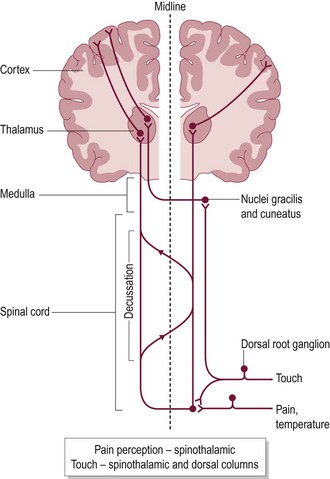68 Pain – an introduction
Almost all pet owners equate pain with a poor quality of life. It is important to recognize the presence of pain in a disease process and to put it into perspective for the owner by discussing definitive and palliative treatment and the duration and severity of pain expected.
The sensation of pain is a subjective interpretation of a noxious stimulus which is transmitted to the cerebral cortex via sensory nerves, dorsal spinal roots, spinal tracts and thalamic nuclei (Fig. 68.1).
The presence of pain in an animal is inferred by the animal’s altered behaviour, posture or gait.
PRESENTING SIGNS
• Altered behavioural patterns: patients may hide, become aggressive, reclusive or lethargic, ‘act like an old dog’, become restless or agitated and have a decreased appetite
• Reduced movement: decreased activity, will not greet the owner, stays in bed, will not jump into a car, lame, does not shake body or head fully, decreased grooming
• Altered posture: shifts position to limit weight-bearing, restricts head movement, arches back, lowers head, guards or becomes tense/rigid.
Humans can describe the quality of pain they experience and this gives rise to a lot of jargon.




